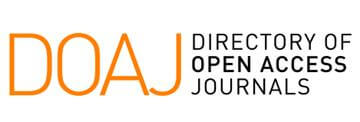(Re)thinking the rhetoric style for expressing Motion
Applicable notions for teaching Portuguese as a second language
Keywords:
Motion, Thinking-for-Speaking, Rethinking-for-SpeakingAbstract
World languages are split into two categories, based on the way each one of them encodes the semantic elements to express Motion. The speaker of those languages develops his own rhetorical style, known as Thinking-for-Speaking, which differs from the rhetorical style of speakers of other languages, especially those languages that fall into opposite categories. To circumvent language barriers in the foreign language learning process, and to communicate efficiently in the target language, it is necessary to be aware of the typological issues regarding the expression of Motion and to develop strategies to Rethinking-for-Speaking.
Downloads
References
ASKE, J. Path predicates in English and Spanish: A closer look. Proceedings of the 15th Annual Meeting of the Berkeley Linguistics Society. Berkeley, CA: Berkeley Linguistics Society, p. 1-14, 1989.
BATORÉO, Hanna J.; FERRARI, L. Events of Motion and Talmyan Typology: Verb-framed and Satellite-framed Patterns in Portuguese. Cognitive Semantics, v. 2, p. 59-79, 2016.
FILIPOVIC, L. Applied Language Typology: Applying typological insights in professional practice. Languages in Contrast, v. 17, n. 2, p. 255-278, 2017.
HIJAZO-GASCÓN, A. La exprésion de eventos de movimiento y su adquisición em segundas lenguas [Tese]. Saragoça: Departamento de Lingüística General e Hispánica Universidad de Zaragoza, 2011.
HIJAZO-GASCÓN, A.; IBARRETXE-ANTUÑANO, I. Las lenguas Románicas y la Tipología de los Eventos de Movimiento. Romanische Forschungen, n. 25, p. 467-494, 2013.
MAYER, M. Frog, where are you?. New York: Dial Press, 1969.
MONTERO-MELIS, G.; BYLUND, E. Getting the ball rolling: the cross-linguistic conceptualization of caused motion. Language and Cognition, v. 9, n. 3, p. 446-472, 2017.
ÖZÇALISKAN, S. Ways of crossing a spatial boundary in typologically distinct languages. Applied Psycholinguistics, p. 1-25, 2013.
ROBINSON, P.; ELLIS, N. Conclusion: Cognitive Linguistics, Second Language Acquisition and L2 instruction - issues for research. In: _________ (eds.). Handbook of cognitive linguistics and second language acquisition. Nova Iorque/Londres: Routledge, 2008, p. 489-546.
SLOBIN, Dan I. Learning to think for speaking native language, cognition, and rhetorical style. Pragmatics, v.1, n. 1, p. 7-25, 1991
SLOBIN, Dan I. From “thought and language” to “thinking for speaking.” In: GUMPERZ, John, J.; LEVINSON, Stephen C. (eds.). Rethinking linguistic relativity. Cam¬bridge: Cambridge University Press, 1996, p. 70-96.
SLOBIN, Dan, I. What makes Manner of motion salient? Explorations. In: linguistic typology, discourse and cognition. In: Hickmann, M.; Robert, S. (eds.). Space in Languages: Linguistic Systems and Cognitive Categories. Amsterdam/Nova York: John Benjamins, 2006, p. 59-82.
SLOBIN, Dan I; HOITING, N. Reference to movement in spoken and signed languages: Typological considerations. Proceedings of the 20th Annual Meeting of the Berkeley Linguistics Society. Berkeley, CA: Berkeley Linguistics Society, p. 487-503, 1994.
TALMY, L. Lexicalization patterns: Semantic structure in lexical forms. In: SHOPEN, Timothy (ed.). Language Typology and Syntactic Description: Grammatical Categories and the Lexicon. Cambridge: Cambridge University Press, 1985, p. 57-149.
TALMY, L. Lexicalization patterns. In: ____________ (ed.). Toward a cognitive semantics Volume 2: Typology and process in concept structuring. Cambridge/Londres: The MIT Press, 2000, p. 21-146.
Downloads
Published
How to Cite
Issue
Section
License
The copyright of the articles published in Cadernos de Pós-Graduação em Letras belongs to the authors, who grant the Mackenzie Presbyterian University the exclusive rights to publish the content. Total or partial reproduction is prohibited without due authorization from the Editorial Committee, except for study and research.










